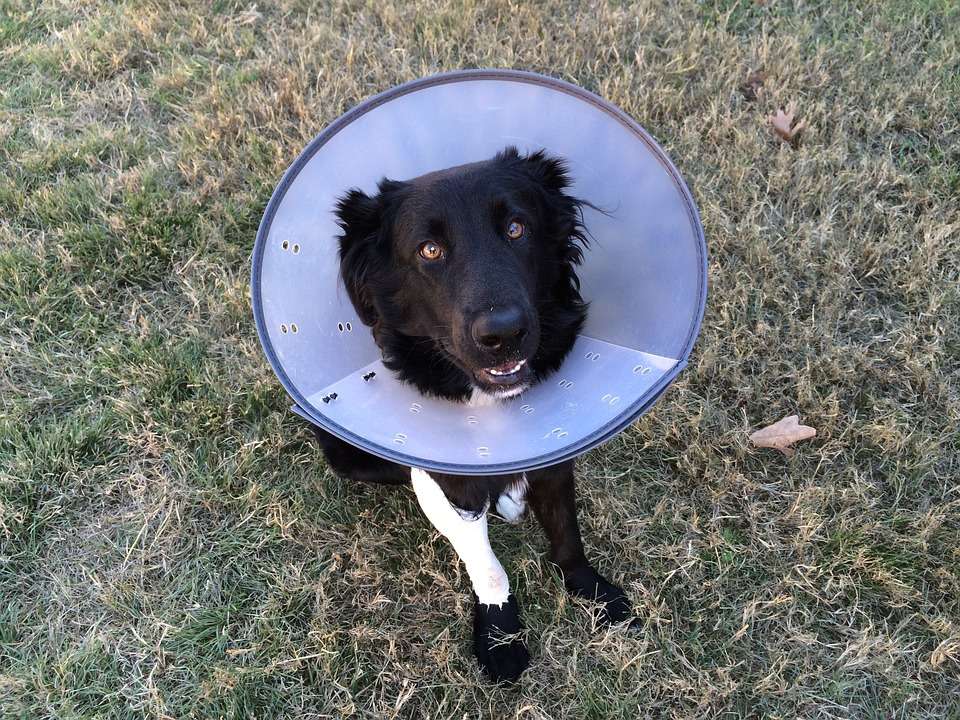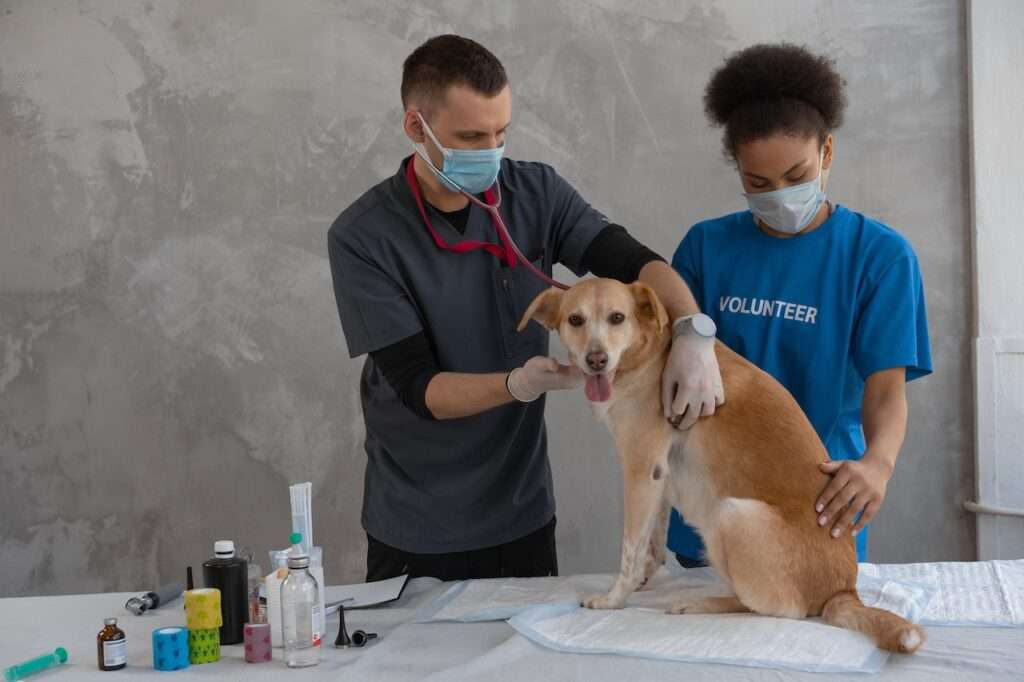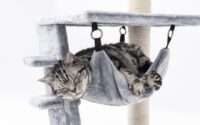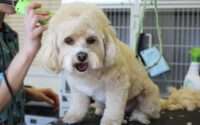When to Take Cone off Dog after Neuter: Your Ultimate Guide
When you bring home your dog after a neuter surgery, you may be wondering how long they need to wear the cone. As a responsible pet parent, it’s crucial to prioritize your dog’s comfort and safety during their recovery process. Knowing when to take the cone off your dog after neuter is crucial to their well-being.
In this article, we will discuss why dogs need a cone after neuter, when it’s safe to take the cone off, and how to properly care for your dog during their recovery. It’s important to follow your vet’s instructions and monitor your dog’s healing progress to ensure a smooth recovery.
Why Do Dogs Need a Cone After Neuter?
After your dog undergoes a neuter surgery, it’s crucial to take proper care of them during the recovery process. One essential aspect of this care is ensuring that your furry friend wears a cone, also known as an Elizabethan collar or e-collar. At first glance, the cone may seem uncomfortable or even a little funny, but it serves a vital purpose in your dog’s healing journey.
The primary reason dogs need a cone after neutering is to prevent them from licking or chewing the incision site. Dogs naturally tend to groom themselves, and their instinct to lick or chew can interfere with the healing process. The incision area is sensitive and delicate, and any excessive licking or chewing can cause irritation, introduce bacteria, and potentially lead to infections.
The cone serves a crucial purpose by preventing your dog from reaching the surgical site and causing disruptions during the healing process. It acts as a protective barrier, ensuring that your dog cannot disturb the incision, allowing it to heal properly and without complications. By creating a physical barrier, the cone safeguards your dog’s well-being, preventing accidental scratching or injury to the surgical area.
While wearing the cone, your dog may initially struggle to adapt and may appear a bit awkward or clumsy. They might bump into objects or experience some difficulties eating or drinking. However, it’s essential to understand that these temporary challenges are minor inconveniences compared to the long-term benefits for your dog’s recovery.
When Can the Cone Be Taken Off?

Typically, dogs need to wear the cone for about 10 to 14 days after neuter surgery. This timeframe allows for sufficient healing of the incision site, reducing the risk of complications. Remember that every dog is different, and the healing process may vary. Your veterinarian will assess your dog’s condition and provide you with specific instructions tailored to their needs.
During the recovery period, closely monitor your dog’s behavior and the state of the incision site. If you notice any signs of redness, swelling, discharge, or if your dog is excessively licking or scratching the area, contact your vet immediately. These could be indications of a potential problem, and it’s important to address any concerns promptly.
While your dog is wearing the cone, you can help make them more comfortable by providing a calm and quiet environment. Create a cozy resting space and ensure they have access to fresh water and their regular meals. Engage in activities that stimulate their mind, such as gentle play or puzzle toys, to help alleviate any restlessness caused by wearing the cone.
If your dog is finding the cone particularly distressing or is having difficulty eating or drinking, consult your veterinarian. They may be able to recommend alternative options, such as a softer fabric cone or a recovery suit, which can offer a more comfortable experience while still preventing access to the incision site.
Taking off the cone prematurely can put your dog at risk, potentially leading to infections or further injury to the surgical area. Your vet will carefully assess your dog’s progress and provide you with the green light to remove the cone when they determine it is appropriate.
Signs That It’s Safe to Take the Cone Off
One of the most significant indicators that it’s safe to take the cone off is observing the healing progress of the incision site. The area should be showing signs of improvement, with no visible redness, swelling, or discharge. A healed incision will typically appear clean and closed, without any signs of infection or inflammation. If you notice any concerning changes in the appearance of the incision, it’s crucial to consult your veterinarian before considering cone removal.
In addition to visual cues, closely observe your dog’s behavior and their interaction with the surgical area. A dog ready to be cone-free will show no signs of discomfort or pain around the incision site. They won’t exhibit any sensitivity or tenderness when touched in that area.
Importantly, your dog should no longer be attempting to lick, bite, or chew the incision. Self-restraint from these behaviors is a positive sign that your dog’s healing process is progressing as expected. Remember, it’s preferable to keep the cone on for a few extra days if you’re unsure, rather than risk complications or setbacks in your dog’s healing journey.
By carefully observing the signs of healing, seeking veterinary guidance when needed, and practicing patience, you’ll soon reach the point where you can confidently remove the cone, knowing that your loyal companion has successfully navigated their way through recovery and can now enjoy their freedom once again.
Caring for Your Dog During Recovery

During your dog’s recovery from neuter surgery, providing them with proper care and attention is vital for a smooth healing process. Here are some tips to further support your furry friend’s recuperation:
- Create a calm and comfortable environment: Designate a quiet space where your dog can rest and recover without disruptions. Limit their exposure to loud noises, active play, or excessive stimulation that could cause stress and hinder the healing process.
- Implement a restricted movement area: Consider setting up a confined space or using baby gates to limit your dog’s access to stairs or areas where they could engage in energetic activities. This will help prevent any accidental jumping, running, or rough play that could strain their incision site.
- Maintain a consistent routine: Dogs thrive on routine, and maintaining their regular feeding, walking, and potty schedules can help reduce any additional stress during their recovery. Consistency in their daily routine will promote a sense of stability and aid in their overall well-being.
- Provide mental stimulation: While physical activity should be limited, mental stimulation can help keep your dog entertained and prevent boredom during their recovery period. Engage them in puzzle toys, treat-dispensing toys, or gentle training exercises that stimulate their mind without exerting physical strain.
- Offer a balanced diet: Ensure your dog receives a well-balanced and nutritious diet during their recovery. Consult with your veterinarian about the appropriate food options and portion sizes that support their healing process. Proper nutrition plays a crucial role in their overall health and recovery.
- Keep incision site clean and dry: Follow your veterinarian’s instructions for wound care and cleanliness. Keep the incision site dry and avoid exposing it to excessive moisture. If necessary, gently clean the area as advised by your vet using mild, pet-safe cleansers.
- Provide gentle, soothing companionship: Your dog may feel more vulnerable and require extra comfort during their recovery. Spend quality time with them, offering gentle affection, soothing massages, and soft, reassuring words. Your presence and care will help alleviate any anxiety they may be experiencing.
Remember, each dog’s recovery timeline can vary, so it’s important to stay in regular communication with your veterinarian. They can provide specific guidelines and address any concerns you may have throughout the recovery process.
Additional Tips for a Smooth Recovery
Here are a few additional tips to help ensure a smooth recovery for your dog after their neuter surgery:
- Provide your dog with a comfortable and quiet place to rest. Consider setting up a cozy area with blankets and toys to keep them comfortable and relaxed.
- Avoid giving your dog any human food or treats during their recovery period, as this can cause upset stomach or other digestive issues.
- Keep your dog’s nails trimmed to prevent them from scratching or accidentally damaging their incision site.
- Consider using a pet-friendly calming product, such as a pheromone diffuser or calming treat, to help your dog relax during their recovery period.
- To guarantee your dog’s continuous health and wellbeing, always adhere to your veterinarian’s directions and arrange follow-up appointments as required.
By following these tips and providing your dog with the care and attention they need, you can help ensure a successful recovery after their neuter surgery.
Alternatives to the Cone
When it comes to finding alternatives to the cone for post-neuter care, you’ll be glad to know that there are options available to cater to your dog’s comfort. While the cone remains the most commonly used method, some dogs may find it uncomfortable or stressful. Let’s explore a few alternatives that can provide a more relaxed experience for your furry friend:
- Inflatable collars: These collars are designed to resemble a donut-shaped cushion that fits around your dog’s neck. They offer a protective barrier without obstructing your dog’s vision or causing as much discomfort as a traditional cone. Inflatable collars allow your dog to move more naturally and comfortably while still preventing access to the incision site. They offer a softer and more flexible option for dogs who may find the traditional cone bothersome.
- Bodysuits: A full-body garment, such as a recovery suit, can be an excellent alternative to the cone. These suits cover your dog’s torso and extend to their hind legs, effectively shielding the incision site from any unwanted contact. They provide a snug and secure fit, preventing your dog from licking or chewing the surgical area. Bodysuits offer the added advantage of safeguarding other sensitive areas your dog may have, such as skin irritations or hotspots. Plus, they can be a stylish and fun option for your fashion-forward pup!
- Medical tape or bandages: For small incisions or areas that are easily accessible, your veterinarian may suggest using medical tape or bandages to cover the incision site. This can serve as a temporary barrier, preventing your dog from licking or chewing the area. However, it’s important to note that the effectiveness of this method may vary depending on your dog’s behavior and the location of the incision.
Before making a decision, it’s crucial to discuss alternative options with your veterinarian. They can evaluate your dog’s specific needs and recovery process, ensuring that the chosen alternative is appropriate and effective. Your vet will consider factors such as the size and location of the incision, your dog’s behavior, and any potential challenges they may face during the recovery period.
Conclusion
Neutering your dog is an important milestone in their life, promoting their overall health and well-being. While the recovery process may seem daunting, it’s crucial to approach it with care and attentiveness, following your veterinarian’s guidance every step of the way.
The cone, although sometimes seen as an inconvenience, plays a vital role in safeguarding your dog’s incision site from potential complications. It’s essential to understand the significance of adhering to your vet’s instructions regarding the duration of cone usage. They will provide you with valuable insights into your dog’s specific needs, ensuring a safe and successful recovery.
During the recovery period, it’s natural to feel concerned and watchful over your furry companion. Keep a keen eye out for any signs of discomfort or pain, as this may indicate the need for medical attention. Remember, your veterinarian is always there to offer guidance and support, addressing any questions or uncertainties you may have.
By embracing the recovery process and maintaining open communication with your veterinarian, you’re actively contributing to your dog’s well-being and a successful healing journey. Your dedication and commitment will help your loyal companion resume their joyful, tail-wagging adventures, filled with health and happiness.
Frequently Asked Questions
Q: How long should my dog wear the cone after neutering surgery?
A: It is generally recommended to keep the cone on your dog for about 10 to 14 days after neutering surgery. However, the specific duration may vary based on your dog’s individual healing process and the veterinarian’s instructions.
Q: Why does my dog need to wear a cone after neutering?
A: The cone, also known as an Elizabethan collar or e-collar, is used to prevent your dog from licking, biting, or scratching the surgical site. It is essential to protect the incision area and prevent any potential complications that could arise from your dog interfering with the healing process.
Q: Can I remove the cone temporarily for my dog to eat or drink?
A: Yes, you can remove the cone for short periods to allow your dog to eat or drink. However, closely supervise your dog during these times to ensure they don’t excessively lick or irritate the surgical area. Once your dog is done eating or drinking, promptly put the cone back on.
Q: My dog seems uncomfortable with the cone. Are there any alternatives?
A: Some dogs may find wearing a cone uncomfortable or stressful. In such cases, you can discuss alternative options with your veterinarian, such as a soft fabric cone or a recovery suit, which may provide a more comfortable alternative while still preventing access to the incision area.
Q: What if my dog manages to remove the cone?
A: If your dog is successful in removing the cone, it’s crucial to put it back on as soon as possible to prevent any unwanted licking or biting. You may need to use additional measures, such as distraction toys, to discourage your dog from removing the cone.
Q: How can I make my dog more comfortable while wearing the cone?
A: To help your dog adjust to wearing the cone, make sure it fits properly and isn’t too tight or too loose. Ensure that your dog has a comfortable bed or resting area, and provide extra attention, reassurance, and mental stimulation to keep their spirits up during the recovery period.
Q: What signs should I watch for that may indicate a problem with the incision?
A: Keep a close eye on the incision site for any signs of redness, swelling, discharge, excessive licking, or foul odor. If you notice any of these symptoms or have concerns about your dog’s recovery, contact your veterinarian immediately.
Q: Can I bathe my dog while they are wearing the cone?
A: It’s generally not recommended to bathe your dog while they are wearing the cone, as the cone can get wet and cause discomfort or irritation. Consult with your vet for advice on how to keep your dog clean during their recovery period.
Q: Can I use alternative options to the cone?
A: Yes, there are alternative options to the cone, such as inflatable collars, bodysuits, or medical tape. Remember, it’s always best to consult with your veterinarian for specific instructions and advice regarding your dog’s post-neutering care.




